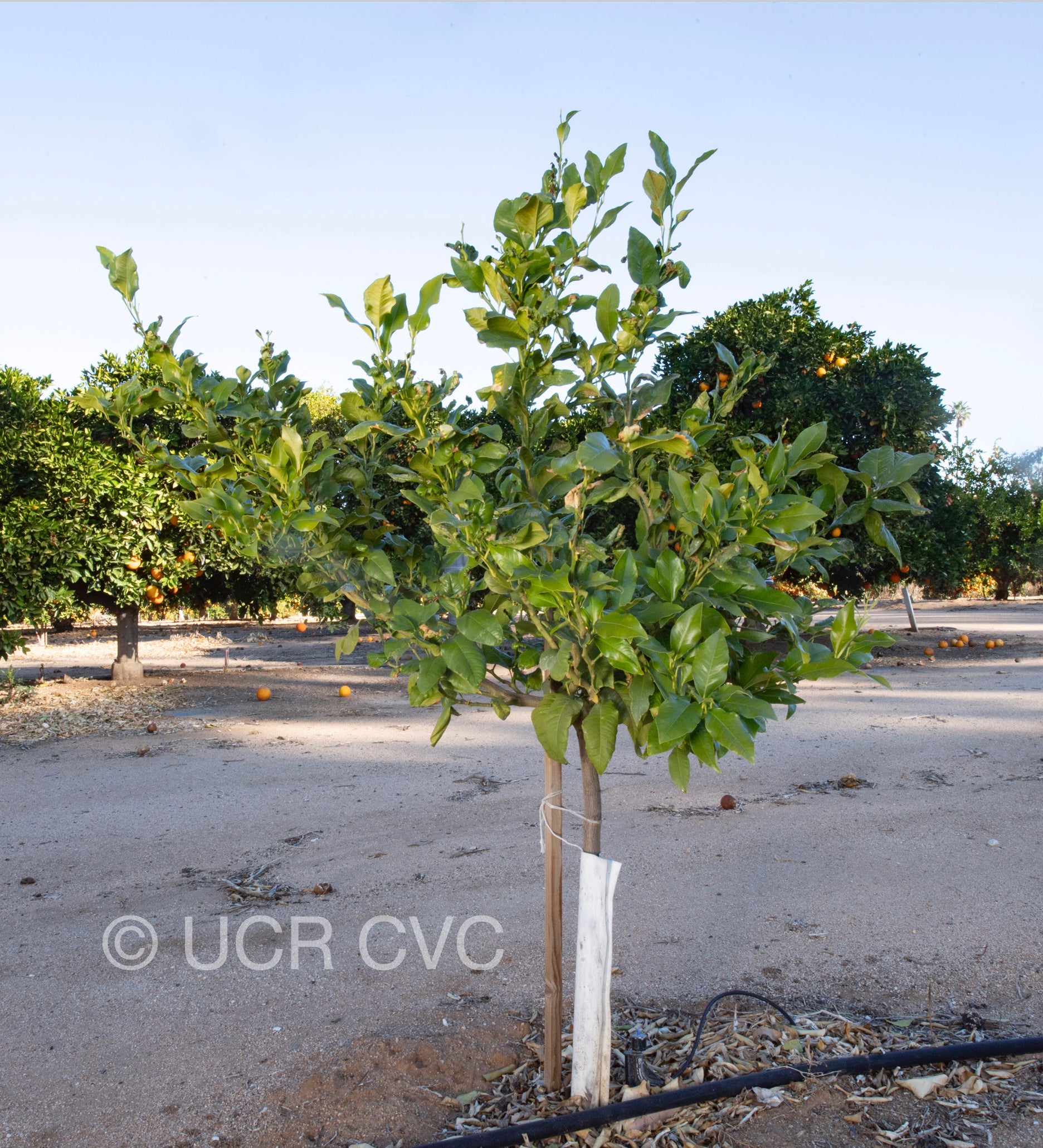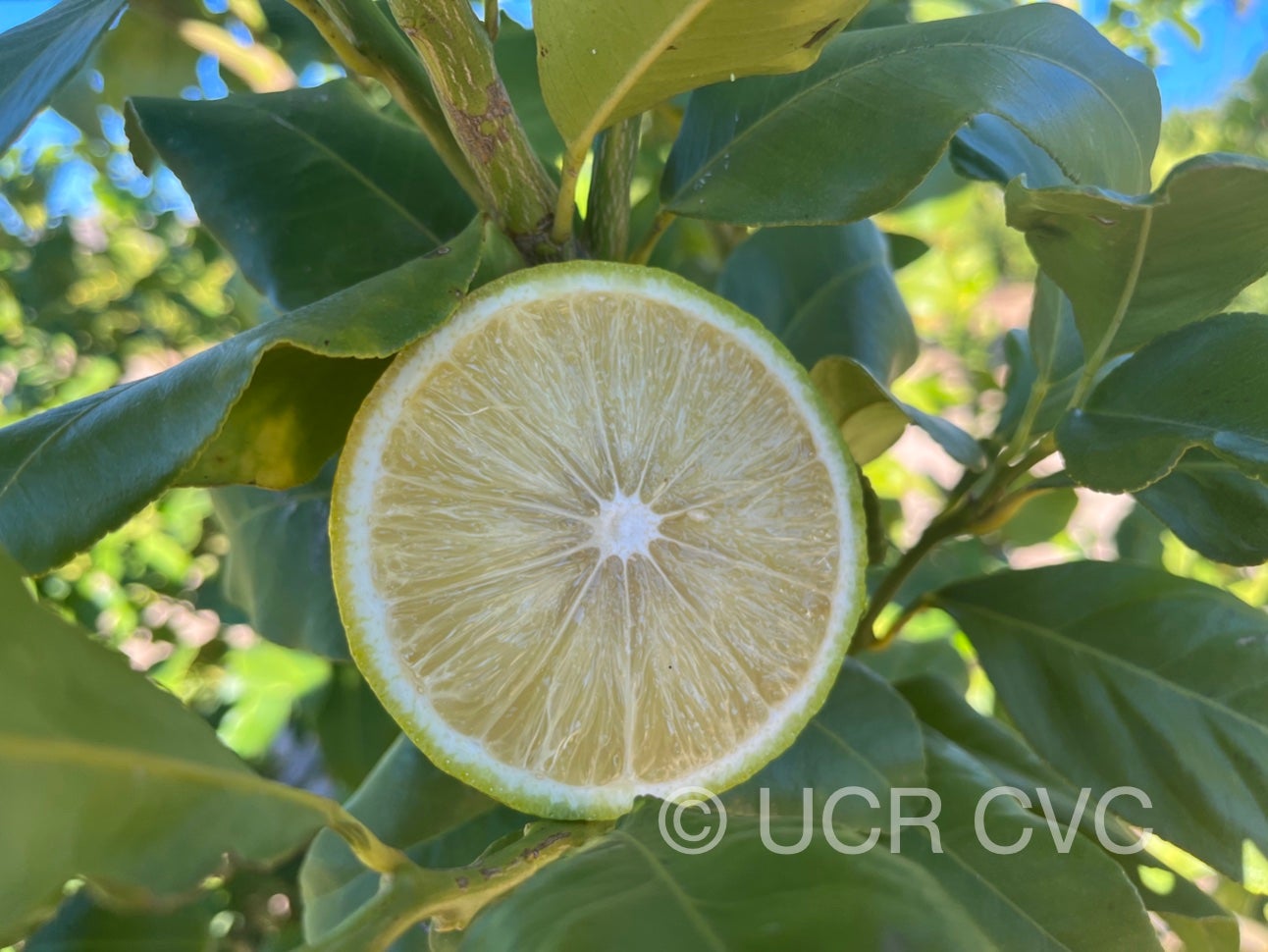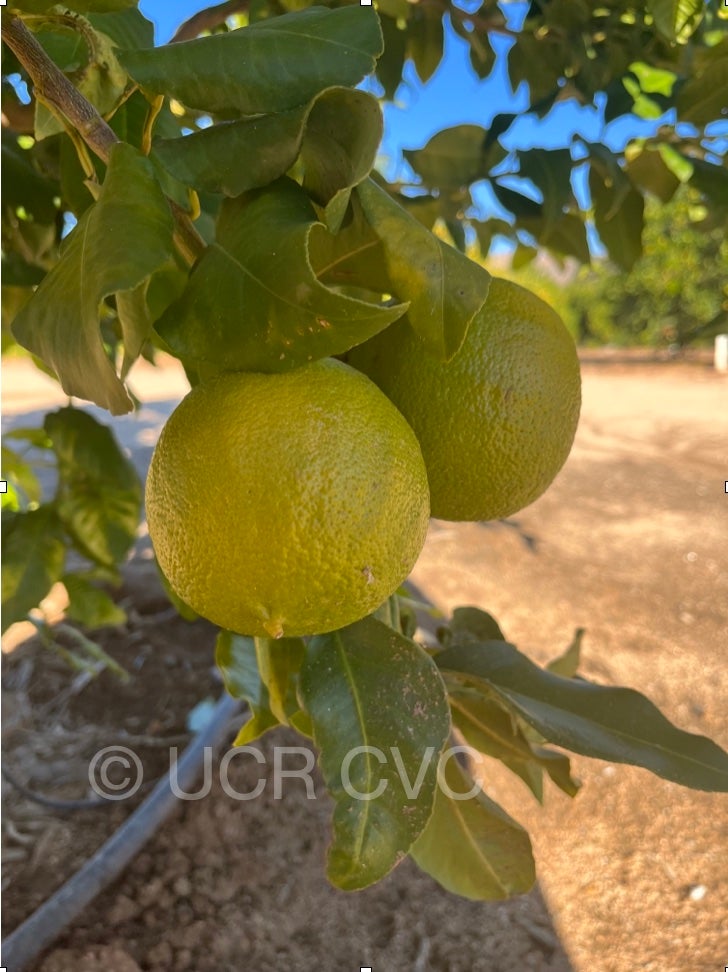Citrus limetta Risso var. bergamia Loisel.
CRC 4267
Source
Received as budwood from Sicily, Italy, Institute Sperimentale per l'Agrumicoltura, 2008.
Parentage/origins
Budsport of 'Castagnaro' Bergamot sour orange, Calabria, Italy
Rootstocks of accession
Carrizo
Season of ripeness at Riverside
Unknown
Notes and observations
RRK: "Bergamot (Bergamotto, Italian) is a distinctive type of sour orange hybrid long grown in the Mediterranean area (but chiefly in Calabria, Italia) for its prized essential oils, which are used in the production of specific perfumes. General information on Bergamot can be found in Hodgson (1967), Prodotti Regionali and Consorzio del Bergamotto, among many other resources. See also information and pretty pictures in the UC Riverside Citrus Varieties Collection website
Hodgson (1967) summarizes previous information by noting that there are four types of Bergamot: the "common" Bergamot, Melarosa, Torulosa, and Piccola. Traditionally, the most widely grown cultivars were two selections of common Bergamotto: 'Femminello' and 'Castagnaro'. However, "'Fantastico', probably originated by mutation, spread quickly out between the end of the fifties and the beginning of the next decade" (Barone et al, 1988) and became the leading variety by the 1980s. It now accounts for approximately 70 % of the cultivated area, with 'Femminello' accounting for 20 % and 'Castagnaro' for 10 % (Barone et al, 1988; Terranova et al, 1992). 'Fantastico' became the dominant variety due to its good essence, yield, quality, the fact that it "overcomes the poor suitability and weakness of 'Femminello'", and that it does not have the strong tendency to alternate bear as does 'Castagnaro' (Barone et al, 1988). Most Bergamot orchards are mixed plantings of the three varieties, similar to traditional field blends of wine grapes. Sweet lime was used as a rootstock until the beginning of the 20th century as it ensured a high yield and quality of essential oils and a short juvenility period. More recently, sour orange has been used as a rootstock (Barone et al, 1988). However, the production of Bergamot has declined to less than 50 % of what it was in the past and now few if any Bergamots are produced by Italian producers (Barone et al (1988); Terranova et al, 1992). For more information on current production practices, please consult Barone et al (1988)
'Fantastico' trees are vigorous with wide canopies. The shoot color is light green and thorns are absent. Flowering is March/April with fruit harvest in December/January. The fruit has a regular pear-like shape and an average weight of 130 g and an essence yield of 0.55-0.65 %. Most fruit is borne as singles (74%) or doubles (18 %). This informationn is summarized from Barone et al (1988) and Barone et al(1988) and Terranova et al (1992), to which the reader is referred for more detailed information.
Older plantings of Bergamot were found to have several graft-transmissible diseases, such as cristacortis, concave gum, impietratura, psorosis, exocortis, and xyloporosis. Apaprently virus-free propagative materials were achieved via shoot-tip grafting (Terranova et al, 1984; 1992). Also common in Bergamot plantings was gummosis. This was reduced by the use of sour orange rootstock as noted above."
Availability
Not commercially available in California.
USDA Germplasm Resources Information Network page for Bergamotto Fantastico


